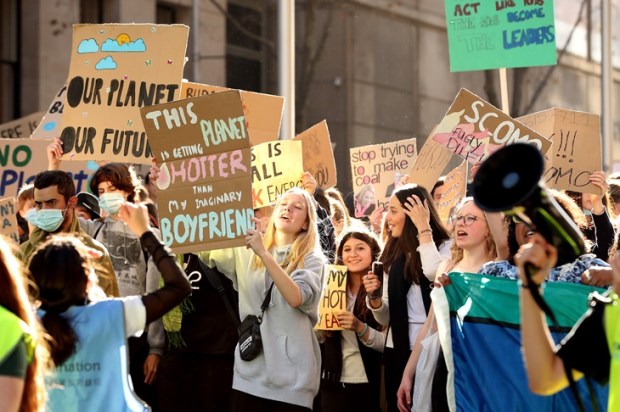What does it mean to be a conservative? One interpretation characterises conservatism as ossified, backward-looking, and incapable of change. In politics, the Liberal Party is often condemned as old-fashioned and out of touch. To win elections, all the Liberal Party has to do is to mimic the far-left agenda championed by the ALP, Greens, and Teals in areas like climate change, gender and sexuality, identity politics, victimhood, and the Voice.
In education, instead of the essential knowledge, understanding, and skills inherited from the past, the body responsible for the national curriculum (ACARA) and like-minded academics argue the focus must be on content-free 21st Century competencies and skills as the future is unpredictable and ever-changing.
It’s true conservatism that values the past. Edmund Burke, who many consider the father of conservatism, describes British institutions and way of life as ‘an entailed inheritance derived from our forefathers’.
Such is the need to acknowledge and celebrate the past, especially the British legal and political system, Burke concludes, ‘People will not look forward to prosperity who never look back to their ancestors.’
At the same time Burke values the past, it’s also true he accepts the need for change. Burke argues ‘a state without the means of change is without the means of its conservation’. Based on ‘the principle of improvement’, Burke accepts societies cannot remain static.
The qualification though, and not unexpected given he was writing at the time of the French Revolution, is that Burke prefers evolutionary change rather than revolutionary.
While dedicated to ‘Liberty, Equality and Fraternity’, by violently overthrowing society’s existing structures and institutions those responsible for the French Revolution sowed the seeds for a reign of violence and terror epitomised by Madame Guillotine and summary executions.
In opposition to violent change, Burke cites the example of the British parliamentary and common law systems, since the time of Magna Carta and the Glorious Revolution, which limits the power of the monarchy and protects citizens’ rights.
While acknowledging the need for evolutionary change, and similar to Edmund Burke, the Italian philosopher and cultural critic Augusto Del Noce argues against radical change that involves a violent and sudden break with the past.
Del Noce describes such change as involving a ‘total revolution’ and attributes its origins to Jean-Jacques Rousseau and Karl Marx.
In opposition to change directed at cancelling the past, Del Noce endorses the principle ‘that the duration of a given country’s institutions proves that they exist for a reason, and that modifications and improvements are possible within the context of such institutions’.
Matthew Arnold also reinforces Burke’s call for conservatism when, after referring to the need to be familiar with the ‘best that has been thought and said’, he argues equally as vital is turning ‘a stream of fresh and free thought upon our stock notions and habits which we follow staunchly but mechanically’.
Contrary to what critics argue, the need to critique institutions and beliefs inherited from the past is an essential aspect of conservatism. The difference between conservatives and those committed to radical change is that conservatives are sceptical of unwarranted change as it often causes more damage than good.
When detailing what characterises conservatism, the English philosopher Michael Oakeshott differentiates between change and innovation. The type of change illustrated by a violent storm or the death of a friend, though regrettable, is to be accepted. What Oakeshott describes as innovation, on the other hand, involves human agency and design and, as such, has to be approached cautiously.
Oakeshott writes:
‘Innovating is always an equivocal enterprise, in which gain and loss (even excluding the loss of familiarity) are so closely interwoven that it is exceedingly difficult to forecast the final up-shot: there is no such thing as unqualified improvement.’
As a result, Oakeshott lists a number of preconditions associated with innovation, including: those arguing for innovation must prove what they suggest is beneficial; that what is proposed is gradual instead of being disruptive and violent; that what is proposed addresses a specific shortcoming and that any consequences, especially unintended ones, are evaluated for their impact.
The French Revolution and subsequent communist revolutions in Russia, China, Cuba, and Cambodia under Pol Pot prove the dangers of revolutionary change and the mistaken belief it is possible to cancel the past and establish a man-made utopia on this earth.
Another example, while less violent and less brutal, illustrating the dangers of what Oakeshott describes as innovation is Australia turning its back on coal and gas in its race to renewable energy represented by solar and wind power.
Even though the race to reduce Australia’s carbon footprint will have no impact on global emissions, will involve billions of dollars of needless and wasteful expenditure, and penalise those who can least afford soaring power bills, climate activists argue the nation must forge ahead.
A second example is the neo-Marxist belief gender and sexuality are social constructs and not biologically determined and God-given. Proven by the closure of Britain’s gender clinic Tavistock and the over 1,000 families suing the clinic for malpractice, it’s clear transgender activism causes more harm than good.
Dr Kevin Donnelly is a senior fellow at the ACU’s PM Glynn Institute and author of Cancel Culture And The Left’s Long March.

























